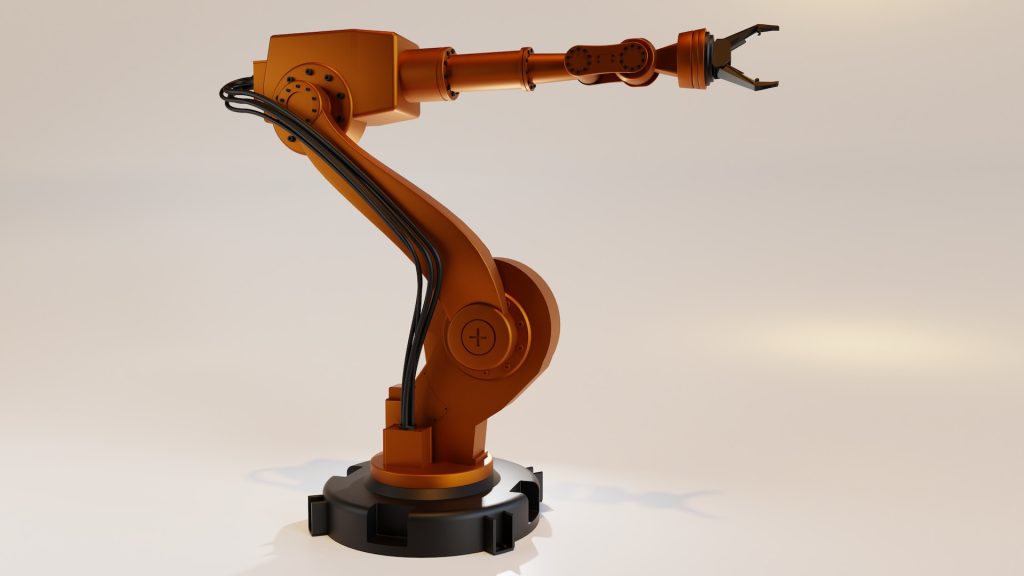Revolutionizing Manufacturing Efficiency: Strategies for a Productive Future
Uncover game-changing tactics and cutting-edge technologies that will inspire you to revolutionize your production line and improve manufacturing efficiency.


Discover the benefits of AccelGrid

Convert more leads into revenue

Manage orders at scale

Streamline billing and get paid on time

Rock-solid inventory control

Optimize your supply chain

Switch to lean manufacturing

Sell anywhere, anytime with mobile POS

Simplify accounting and grow your business

Sell more with integrated eCommerce

AI-powered demand forecasting
Convert more leads into revenue
Manage orders at scale
Rock-solid inventory control
Streamline billing and get paid on time
Optimize your supply chain
Achieve lean manufacturing
Sell more with integrated eCommerce
Sell anywhere, anytime with mobile POS
AI-powered demand forecasting
Simplify accounting and grow your business

In today’s fast-paced and competitive market, it has become crucial for manufacturers to optimize their processes for maximum productivity. Whether you’re a startup looking to streamline your operations or an established industry leader seeking innovative strategies, this blog post is your ultimate guide to achieving a productive future in manufacturing. Get ready to uncover game-changing tactics and cutting-edge technologies that will inspire you to revolutionize your production line.
To remain competitive, manufacturers must continually strive to improve efficiency. There are several ways to do this, ranging from process improvements to equipment upgrades. In this article, we’ll take a look at some of the most effective strategies for increasing manufacturing efficiency.
One of the most important aspects of any manufacturing operation is the production line. By streamlining the production line and eliminating bottlenecks, manufacturers can significantly increase output while reducing waste. In addition, regular maintenance and upgrading of production line equipment can help keep it running at peak efficiency.
Another key area to focus on when trying to improve manufacturing efficiency is inventory management. Excess inventory can tie up valuable resources and lead to stock-outs when demand spikes. Lean inventory management techniques can help keep inventories lean and responsive to customer demand.
Effective communication and collaboration between all members of the manufacturing team is essential for achieving maximum efficiency. By ensuring that everyone is on the same page, manufacturers can avoid costly mistakes and disruptions in production.
There are many benefits to efficient manufacturing, including increased productivity, decreased costs, and improved quality. Efficient manufacturing leads to increased productivity because it minimizes waste and maximizes the use of resources. This results in less time spent on non-productive activities, and more time spent on activities that add value to the product or service. In addition, efficient manufacturing often results in shorter lead times and faster turnaround times, which can be critical for businesses that depend on the timely delivery of products or services.
Decreased costs are another benefit of efficient manufacturing. When waste is minimized and resources are used more effectively, businesses can save money on materials, labor, and other production costs. In addition, businesses that operate efficiently often have lower energy costs due to improved equipment and processes.
Improved quality is another benefit of efficient manufacturing. By minimizing waste and maximizing resources, businesses can produce higher-quality products with fewer defects. This improves customer satisfaction, which is critical for any business.
Finally, efficient manufacturing also leads to improved employee morale. When employees are able to work more efficiently and produce higher-quality products in less time, they feel a sense of accomplishment and pride in what they do. This can lead to increased job satisfaction and loyalty among employees, which can be beneficial for both the business and the workers themselves.
In today’s fiercely competitive manufacturing landscape, improving efficiency has become paramount for companies seeking to thrive and stay ahead of the competition. With technological advancements, changing consumer demands, and the need for cost-effectiveness, manufacturers are constantly seeking strategies to optimize their operations. In this article, we will explore five key strategies for enhancing manufacturing efficiency. By embracing lean principles, leveraging automation and robotics, adopting data-driven decision-making, fostering a culture of continuous improvement, and optimizing supply chain management, businesses can unlock new levels of productivity, reduce costs, and achieve sustainable success in the dynamic world of manufacturing.
Implementing lean manufacturing principles can significantly enhance efficiency. This strategy focuses on eliminating waste, optimizing processes, and improving flow. By analyzing and streamlining workflows, reducing inventory levels, and implementing visual management techniques, companies can minimize downtime, reduce costs, and enhance overall productivity.
Introducing automation and robotics into manufacturing processes can lead to substantial efficiency gains. By automating repetitive and labor-intensive tasks, companies can increase throughput, reduce errors, and improve overall quality. Robotics and advanced technologies such as machine learning and artificial intelligence enable faster and more accurate production, allowing for higher efficiency and output.
Leveraging data analytics and real-time monitoring can provide valuable insights into manufacturing operations. By collecting and analyzing data from machines, processes, and supply chains, companies can identify bottlenecks, optimize production schedules, and predict maintenance needs. Data-driven decision-making allows for proactive measures to enhance efficiency, minimize downtime, and maximize resource utilization.
Adopting a culture of continuous improvement ensures that efficiency is continually assessed and optimized. By empowering employees to identify and solve problems, implement process improvements, and share best practices, companies can drive ongoing efficiency gains. Methods such as Kaizen, Six Sigma, and Total Productive Maintenance (TPM) provide frameworks for continuous improvement initiatives.
Efficient supply chain management plays a vital role in manufacturing efficiency. Collaborating closely with suppliers, implementing just-in-time inventory systems, and optimizing logistics can reduce lead times, minimize excess inventory, and improve production planning. By ensuring a smooth and streamlined flow of materials, companies can avoid delays, reduce costs, and enhance overall efficiency.
It’s important to note that the implementation of these strategies should be tailored to the specific needs and characteristics of each manufacturing operation. Continuous monitoring, analysis, and adaptation are key to sustaining and improving efficiency over time.
Manufacturing efficiency is a critical component of staying competitive in today’s market. Companies need to stay on top of the latest strategies and technologies that can help them remain productive and efficient. By optimizing their processes, businesses can reap the rewards of increased production, cost savings, improved product quality, and better customer satisfaction. With careful planning and implementation, companies will be well-positioned to take advantage of new opportunities for growth.
Uncover game-changing tactics and cutting-edge technologies that will inspire you to revolutionize your production line and improve manufacturing efficiency.
A social commerce strategy sets you up for success by boosting sales and increasing customer engagement. Learn more about some powerful strategies you can use.
Investing in inventory software with the right automation tools can help you achieve operational efficiency and eventually increase your bottom line.